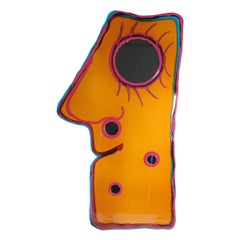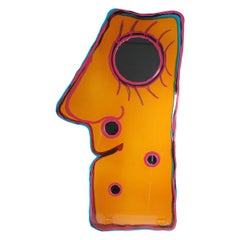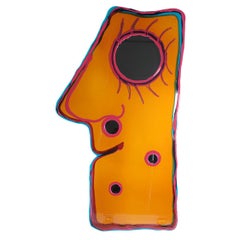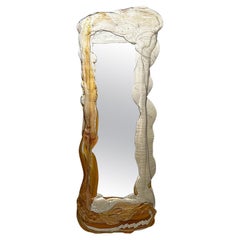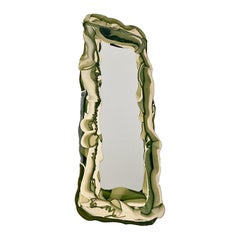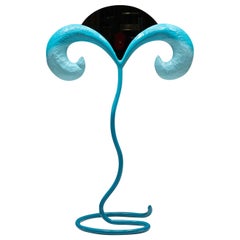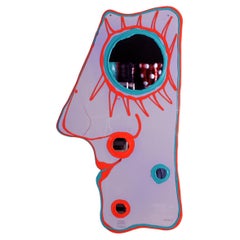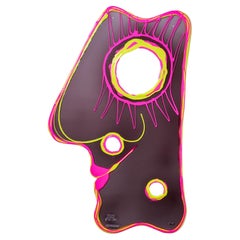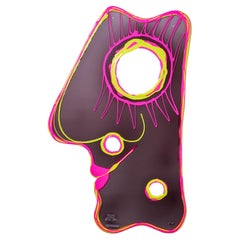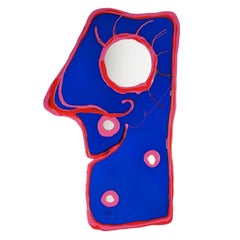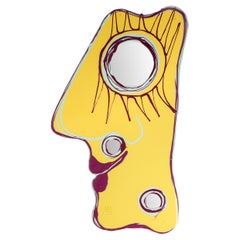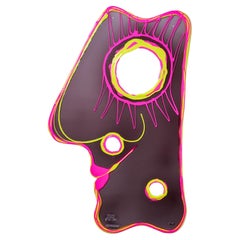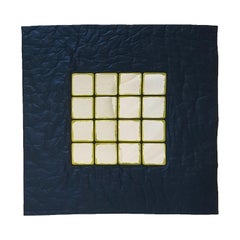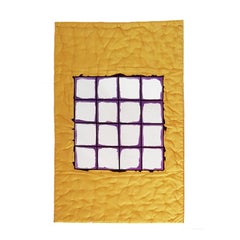Gaetano Pesce Resin Mirror
21st Century and Contemporary Italian Modern Wall Mirrors
Resin
21st Century and Contemporary Italian Modern Wall Mirrors
Resin
21st Century and Contemporary Italian Modern Wall Mirrors
Resin
Early 2000s Italian Post-Modern Wall Mirrors
Mirror, Resin
Vintage 1980s Italian Modern Wall Mirrors
Mirror, Resin
Vintage 1970s Italian Post-Modern Floor Mirrors and Full-Length Mirrors
Mirror, Resin
21st Century and Contemporary Italian More Mirrors
Resin
21st Century and Contemporary Italian More Mirrors
Resin
21st Century and Contemporary Italian More Mirrors
Resin
21st Century and Contemporary Italian More Mirrors
Resin
2010s Italian Wall Mirrors
Resin
21st Century and Contemporary Italian More Mirrors
Resin
Recent Sales
21st Century and Contemporary Italian Other Wall Mirrors
Fabric, Silk, Mirror, Resin
21st Century and Contemporary Italian Other Wall Mirrors
Fabric, Silk, Mirror, Resin
21st Century and Contemporary Italian Other Wall Mirrors
Fabric, Silk, Mirror, Resin
20th Century Italian Wall Mirrors
Mirror, Resin
Late 20th Century European Post-Modern Floor Mirrors and Full-Length Mir...
Mirror, Resin
21st Century and Contemporary Italian More Mirrors
Resin
2010s Italian Post-Modern Wall Mirrors
Mirror, Resin
21st Century and Contemporary Italian More Mirrors
Resin
21st Century and Contemporary Italian More Mirrors
Resin
21st Century and Contemporary Italian More Mirrors
Resin
21st Century and Contemporary Brazilian Modern Wall Mirrors
Mirror, Resin
21st Century and Contemporary Italian More Mirrors
Resin
21st Century and Contemporary Italian Other Wall Mirrors
Resin, Fabric, Silk, Mirror
People Also Browsed
21st Century and Contemporary Spanish Minimalist Side Tables
Marble, Aluminum, Brass
2010s Italian Vases
Resin
Vintage 1960s French Mid-Century Modern Beds and Bed Frames
Fiberglass
21st Century and Contemporary Italian Modern Vases
Resin
21st Century and Contemporary Italian Modern Floor Lamps
Stainless Steel
2010s Danish Scandinavian Modern Dining Room Chairs
Oak
Vintage 1960s Italian Mid-Century Modern Coffee and Cocktail Tables
Metal, Chrome
21st Century and Contemporary Italian Modern Vases
Resin
21st Century and Contemporary Canadian Organic Modern Flush Mount
Steel
2010s Czech Scandinavian Modern Game Tables
Concrete
21st Century and Contemporary Italian Modern Vases
Resin
21st Century and Contemporary Italian Coffee and Cocktail Tables
Resin
2010s Italian Modern Wall Lights and Sconces
Murano Glass
20th Century Italian Post-Modern Table Lamps
Resin
21st Century and Contemporary French Mid-Century Modern Armchairs
Fabric, Wood
2010s Italian Mid-Century Modern Chandeliers and Pendants
Brass
Gaetano Pesce Resin Mirror For Sale on 1stDibs
How Much is a Gaetano Pesce Resin Mirror?
Gaetano Pesce for sale on 1stDibs
Gaetano Pesce was of a generation of Italian architects who in the early 1960s rebelled against the industrial perfection of modernism by conceiving new furniture and objects that were at once expressive and eccentric in form; or you might say they were more like art than functionalist design.
Born in the picturesque coastal Italian city of La Spezia in 1939, Pesce was a precocious talent who could have forged a career as an artist but opted instead to go to Venice to study architecture because, as he has said, it was “the most complex of all the arts.” Rather than having new worlds opened to him at design school, however, Pesce found the rationalist curriculum oppressive in its insistence on standardization and prescribed materials and technologies.
Pesce wanted to explore the latest of both materials and technologies to create objects and buildings never before imagined, with what he called “personalities” that spoke to the issues of the day. He was keen to examine ways to diversify mass production so that each manufactured work could be distinct.
In 1964, Pesce met Cesare Cassina, of the forward-looking furniture company C&B Italia in Milan (now known as B&B Italia), for whom he would create many important designs, beginning with a collection of what he called “transformational furniture” — two chairs and a loveseat — made entirely out of high-density polyurethane foam. To make the pieces easy to ship and cost-efficient, he proposed that after being covered in a stretch jersey, they be put in a vacuum, then heat-sealed flat between vinyl sheets. Once the foam was removed from its packaging, the piece returned to its original shape — hence, the name Up for the series, which debuted in 1969.
In addition to these pieces, Pesce proposed for the collection something he referred to as an “anti-armchair,” which took the shape of a reclining fertility goddess, the iconic Donna.
Producing the piece's complex form turned out to be a technical challenge. Bayer, the foam’s manufacturer, deemed it impossible to accomplish. Pesce persisted and came up with a new procedure, demonstrating not only the designer’s key role in researching the nature and potential of new materials but also his vital importance in “doubting rules.” The Up chair and accompanying ottoman were born, and they were revolutionary in more ways than one.
In the early 1970s, Pesce began exploring one of his key concepts, the idea of the industrial originals. Employing a mold without air holes, and adding a blood-red dye to the polyurethane, he cast a bookcase that resembled a demolished wall, the rough edges of the shelves and posts resulting from fissures in the material made by trapped air.
Through his research into polyurethane, Pesce figured out a way to make a loveseat and armchair using only a simple wood frame and strong canvas covering as a mold. Since the fabric developed random folds during the injection process, the pieces were similar but not identical. Cassina named the suite of furnishings Sit Down and introduced it in 1975. By experimenting with felt soaked in polyurethane and resin, Pesce conceived I Feltri, another collection of armchairs introduced by Cassina in 1987.
Pesce went on to live a life that defied expectation and convention and along the way became one of the most seminal figures in art and design.
Find vintage Gaetano Pesce chairs, sofas, vases and more on 1stDibs.
Finding the Right Mirrors for You
The road from early innovations in reflective glass to the alluring antique and vintage mirrors in trendy modern interiors has been a long one but we’re reminded of the journey everywhere we look.
In many respects, wall mirrors, floor mirrors and full-length mirrors are to interior design what jeans are to dressing. Exceedingly versatile. Universally flattering. Unobtrusively elegant. And while all mirrors are not created equal, even in their most elaborate incarnation, they're still the heavy lifters of interior design, visually enlarging and illuminating any space.
We’ve come a great distance from the polished stone that served as mirrors in Central America thousands of years ago or the copper mirrors of Mesopotamia before that. Today’s coveted glass Venetian mirrors, which should be cleaned with a solution of white vinegar and water, were likely produced in Italy beginning in the 1500s, while antique mirrors originating during the 19th century can add the rustic farmhouse feel to your mudroom that you didn’t know you needed.
By the early 20th century, experiments with various alloys allowed for mirrors to be made inexpensively. The geometric shapes and beveled edges that characterize mirrors crafted in the Art Deco style of the 1920s can bring pizzazz to your entryway, while an ornate LaBarge mirror made in the Hollywood Regency style makes a statement in any bedroom. Friedman Brothers is a particularly popular manufacturer known for decorative round and rectangular framed mirrors designed in the Rococo, Louis XVI and other styles, including dramatic wall mirrors framed in gold faux bamboo that bear the hallmarks of Asian design.
Perhaps unsurprisingly, mid-century modernism continues to influence the design of contemporary mirrors. Today’s simple yet chic mantel mirror frames, for example, often neutral in color, owe to the understated mirror designs introduced in the postwar era.
Sculptor and furniture maker Paul Evans had been making collage-style cabinets since at least the late 1950s when he designed his Patchwork mirror — part of a series that yielded expressive works of combined brass, copper and pewter — for Directional Furniture during the mid-1960s. Several books celebrating Evans’s work were published beginning in the early 2000s, as his unconventional furniture has been enjoying a moment not unlike the resurgence that the Ultrafragola mirror is seeing. Designed by the Memphis Group’s Ettore Sottsass in 1970, the Ultrafragola mirror, in all its sensuous acrylic splendor, has become somewhat of a star thanks to much-lauded appearances in shelter magazines and on social media.
On 1stDibs, we have a broad selection of vintage and antique mirrors and tips on how to style your contemporary mirror too.
